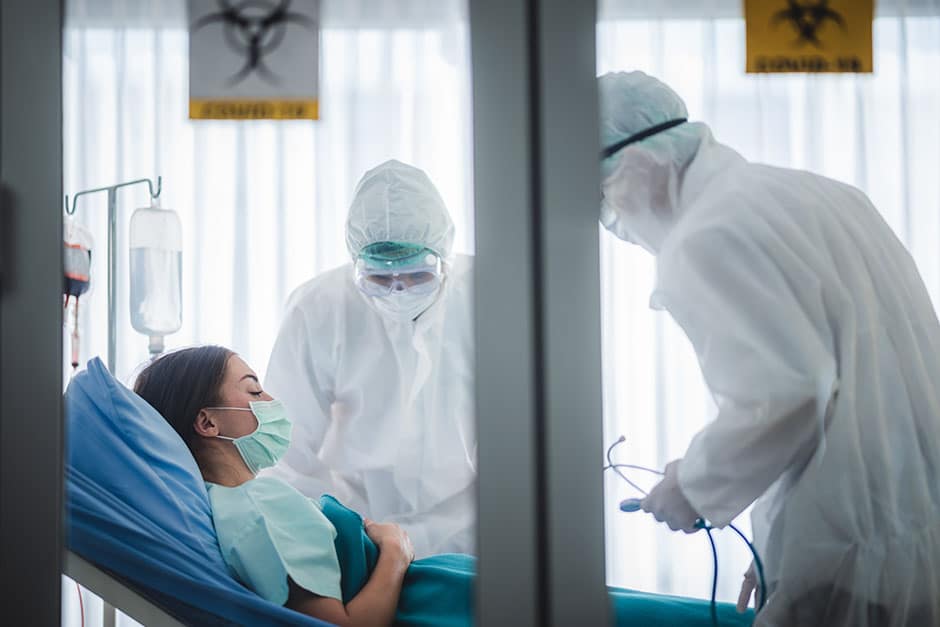How Are Isolation Rooms Used in Medical Facilities?

The last few years have taught all of us the importance of personal protective equipment (PPE) in the treatment of disease and the prevention of infectious outbreaks. One of the most useful items is manufactured by an industrial sewing company like Vinyl Technology: the medical isolation room.
These specialized rooms are designed to provide a safe and sterile environment for patients who are suffering from contagious diseases or conditions. They are used in hospitals, clinics, and other medical settings to help prevent the spread of infectious diseases, such as tuberculosis, influenza, and COVID-19. In this article, we will explore how isolation rooms are used in medicine, the features of isolation rooms, and the importance of using them in medical settings.
What Is a Medical Isolation Room?
A medical isolation room is a specially designed room that is used to isolate patients who are suffering from contagious diseases or conditions. The room is designed to prevent the spread of infections from the patient to other people in the hospital or clinic.
Isolation rooms are equipped with special features that help to maintain a sterile environment. These features may include special air filtration systems, negative air pressure, and high-efficiency particulate air (HEPA) filters. In addition, the room may be equipped with special personal protective equipment (PPE), such as gowns, gloves, masks, and face shields, to protect the healthcare workers who are providing care to the patient.
How Are Medical Isolation Rooms Used in Medicine?
Medical isolation rooms are used in a variety of medical settings, including hospitals, clinics, and other healthcare facilities. They are used to isolate patients who are suffering from contagious diseases or conditions, such as tuberculosis, influenza, and COVID-19.
Patients who are placed in isolation rooms are typically those who have been diagnosed with a contagious disease, or those who are suspected of having a contagious disease. Isolation rooms help to prevent the spread of the disease by containing the infectious particles and preventing them from being released into the air.
Features of Medical Isolation Rooms
Isolation rooms have several key features that help to prevent the spread of infectious diseases. These features may include:
Special air filtration systems: Medical isolation rooms are equipped with special air filtration systems that help to prevent the spread of airborne particles. These systems use HEPA filters to trap small particles, such as viruses and bacteria.
Negative air pressure: Isolation rooms are designed to maintain negative air pressure, which means that air is constantly being sucked out of the room. This helps to prevent contaminated air from escaping the room and spreading the disease.
Personal protective equipment (PPE): Healthcare workers who enter medical isolation rooms are required to wear PPE, such as gowns, gloves, masks, and face shields. This helps to protect healthcare workers from being infected with the disease.
Special cleaning procedures: Isolation rooms require special cleaning procedures to ensure that they remain sterile. The room may be disinfected with special cleaning agents, and all linens and equipment may be sterilized before being used again.
Vinyl Technology also specializes in products such as drinking water storage bags, cushions for chairs and stools, and pneumatic mattresses.
The Importance of Medical Isolation Rooms
As we have all learned in recent years, the use of medical isolation rooms is critical for controlling the spread of infectious diseases in medical settings. These rooms provide a safe and sterile environment for patients who are suffering from contagious diseases or conditions.
By isolating these patients, the spread of the disease can be prevented, which helps to protect other patients, healthcare workers, and visitors from being infected. Isolation rooms also play a critical role in protecting the wider community by preventing the spread of infectious diseases beyond the healthcare.
Frequently Asked Questions About Medical Isolation Rooms
What is the purpose of an isolation room in a hospital setting?
A medical isolation room is a specially designed room used to isolate patients who are suffering from contagious diseases or conditions. The purpose of these rooms is to help prevent the spread of infections from the patient to other people in the hospital or clinic.
What types of diseases or conditions require the use of isolation rooms?
Isolation rooms are used for patients who are diagnosed with or suspected of having contagious diseases or conditions such as tuberculosis, influenza, COVID-19, and other infectious diseases.
What safety measures are taken in a medical isolation room to prevent the spread of disease?
Isolation rooms have several safety measures to prevent the spread of disease, including special air filtration systems, negative air pressure, personal protective equipment for healthcare workers, and special cleaning procedures.
How is the negative air pressure maintained in an isolation room?
Negative air pressure in a medical isolation room is maintained by using specialized air handling systems that draw air out of the room and vent it to the outside or through specialized filtration systems.
How long do patients need to stay in an isolation room?
The length of time a patient needs to stay in an isolation room varies depending on the specific disease or condition. Patients may need to stay in isolation until they are no longer contagious, which may require testing to confirm that the virus or bacteria is no longer present in their system.
Medical Isolation Room Manufacturer Vinyl Technology
All of our medical products are rigorously tested for compliance with standards set by relevant government agencies as well as industry groups like NFPA and ASTM International. Vinyl Technology Inc. is a trusted partner for those who need durable protective garments and equipment that will stand up to any challenge. Get in touch with us today.

